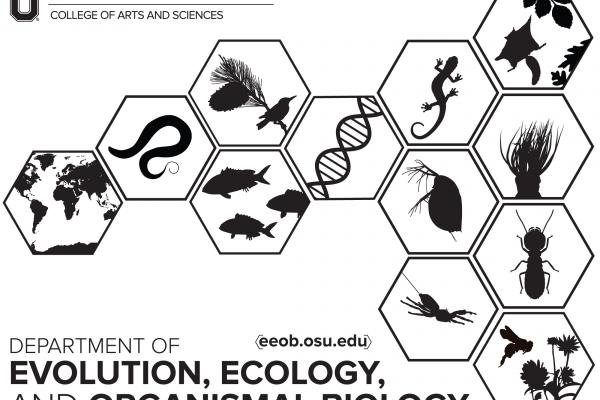February 22, 2019
Publications by EEOB Faculty February 1 - February 28

Lack of strategic service provisioning by Pederson’s cleaner shrimp (Ancylomenes pedersoni) highlights independent evolution of cleaning behaviors between ocean basins
Benjamin M. Titus, Marymegan Daly, Clayton Vondriska, Ian Hamilton, Dan A. Exton. 2019. Scientific Reports 9, Article number: 629(2019). https://doi.org/10.1038/s41598-018-37418-5
Abstract
Marine cleaning interactions have been useful model systems for exploring evolutionary game theory and explaining the stability of mutualism. In the Indo-Pacific, cleaner organisms will occasionally “cheat” and remove live tissue, clients use partner control mechanisms to maintain cleaner honesty, and cleaners strategically increase service quality for predatory clients that can “punish” more severely. The extent to which reef communities in the Caribbean have evolved similar strategies for maintaining the stability of these symbioses is less clear. Here we study the strategic service provisioning in Pederson’s cleaner shrimp (Ancylomenes pedersoni) on Caribbean coral reefs. In the Gulf of Honduras, we use video observations to analyze >1000 cleaning interactions and record >850 incidents of cheating. We demonstrate that A. pedersoni cheat frequently and do not vary their service quality based on client trophic position or cleaner shrimp group size. As a direct analog to the cleaner shrimp A. longicarpus in the Indo-Pacific, our study highlights that although cleaning interactions in both ocean basins are ecologically analogous and result in parasite removal, the strategic behaviors that mediate these interactions have evolved independently in cleaner shrimps.
High levels of functional divergence in toxicity towards prey among the venoms of individual pigmy rattlesnakes
Sarah A. Smiley-Walters , Terence M. Farrell and H. Lisle Gibbs. 2019. Royal Society. https://doi.org/10.1098/rsbl.2018.0876
Abstract
Venom is a complex molecular phenotype that shows high levels of variation in expressed proteins between individuals within and between populations. However, the functional significance of this variation in terms of toxicity towards prey is largely unknown. Here, we assessed the relative toxicity of venom from individual pygmy rattlesnakes (Sistrurus miliarius) on brown anoles (Anolis sagrei) using a novel assay involving tests of fixed doses of venom from individual snakes on individual lizards. We found high levels of functional variation between individual venoms within populations with individual differences (nested within population) explaining 3.6 times more variation in toxicity than population differences. Our results suggest a previously unappreciated adaptive significance to within-population variation in venom. They argue that selective mechanisms that maintain variation within populations may be of equal or greater importance to divergent selection leading to local adaption between populations as evolutionary explanations of venom variation within species.
Thermoprotective adaptations are critical for arthropods feeding on warm-blooded hosts
Joshua B.Benoit, Claudio R.Lazzari, David L.Denlinger, ChloéLahondère. 2019. Current Opinion in Insect Science. https://doi.org/10.1016/j.cois.2019.02.003
Abstract
•Blood-sucking arthropods are exposed to risks of thermal stress during feeding on warm-blooded hosts.
•Different adaptations have evolved to protect against blood-feeding induced heat stress, including thermoregulatory strategies.
•Physiological mechanisms such as synthesis of heat shock proteins protect the arthropods at the cellular level.
•The impact of heat stress on the microbiome and pathogens these blood-sucking arthropods carry remains understudied.
Blood feeding in arthropods has evolved in multiple lineages. This feeding preference provides a source of ample proteins and lipids for egg production and survival, but ingestion of a large warm blood-meal can boost the arthropod’s body temperature 15°-20 °C within seconds to minutes. This represents one of, if not the most, rapid thermal change documented under a natural setting. Here, we describe mechanisms of thermoregulation and thermotolerance in arthropods during blood feeding. The ability to prevent blood-induced thermal damage is a fundamental physiological adaptation linked to the use of warm-blooded vertebrates as food sources. Specific functional and comparative studies have identified unique and divergent mechanisms that suppress or repair thermal stress during blood feeding. These mechanisms include countercurrent heat exchange, evaporative cooling, and upregulation of stress associated proteins.
